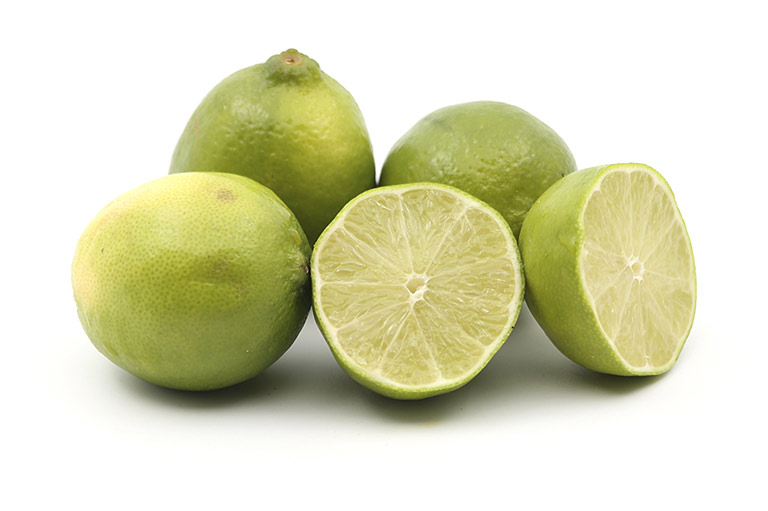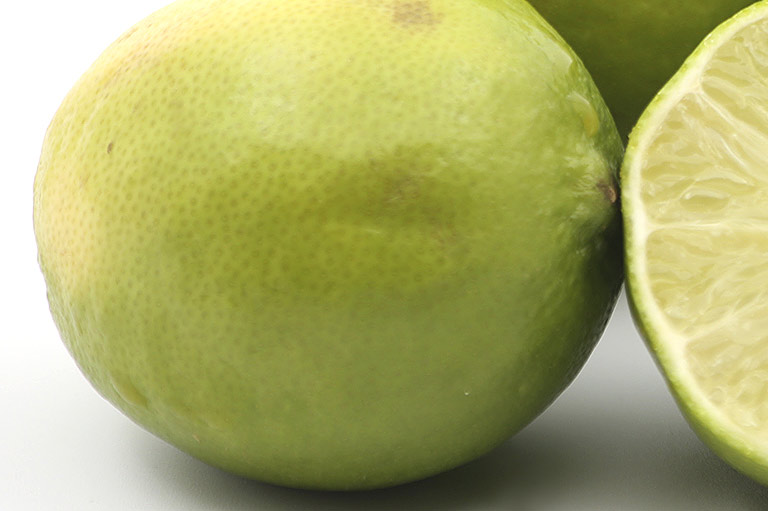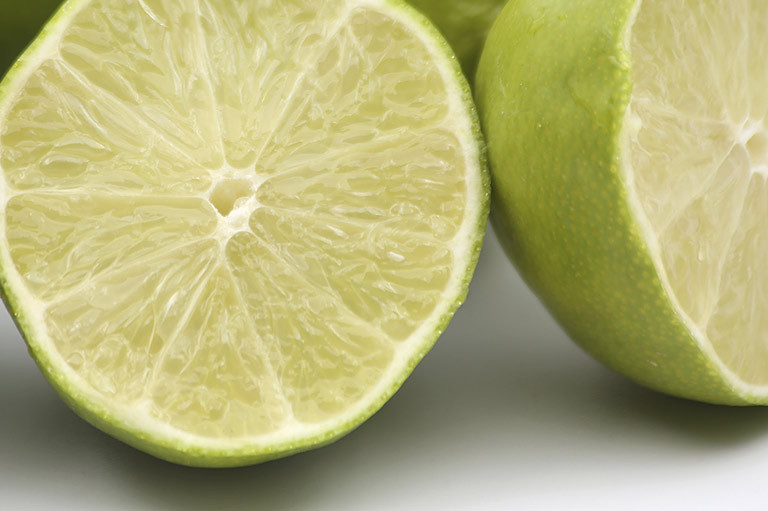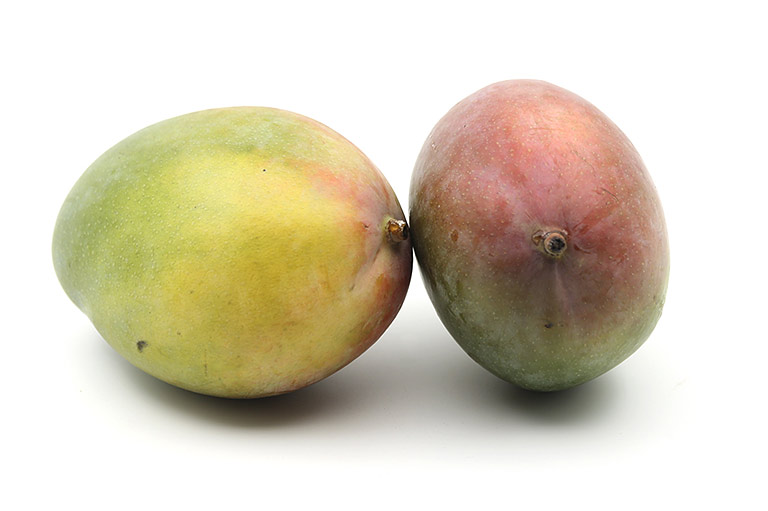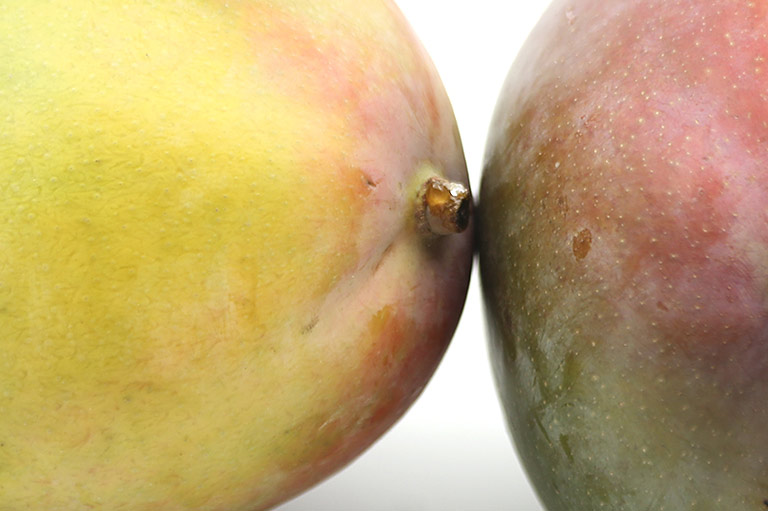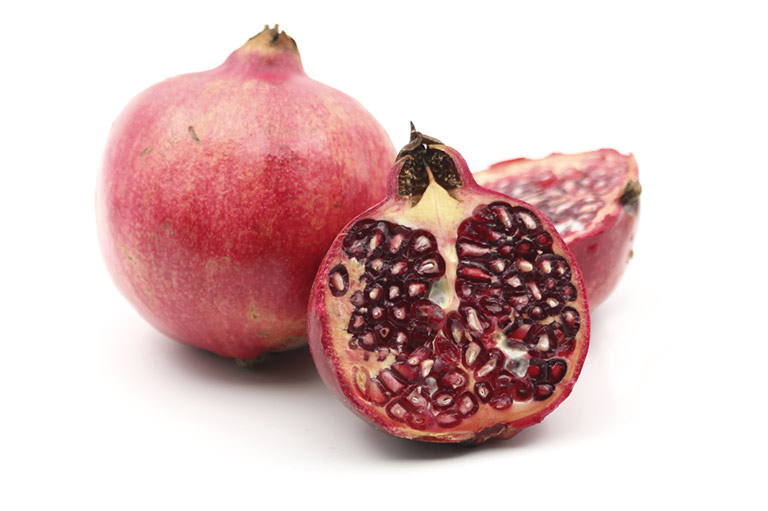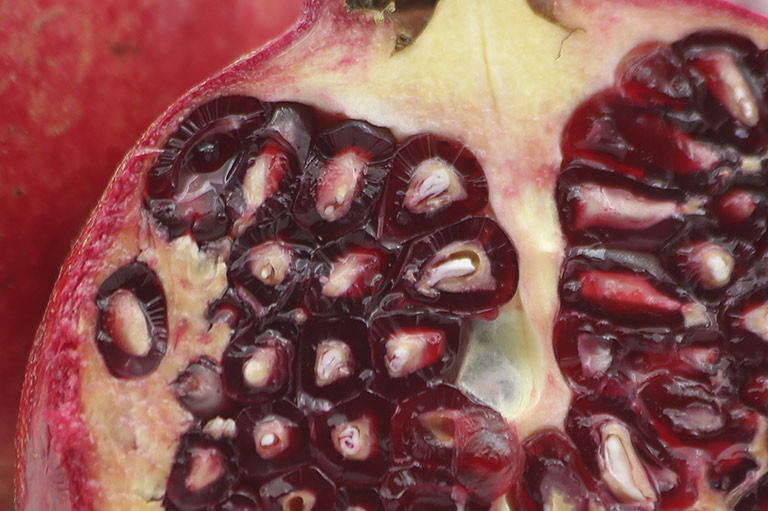September
It’s September: we are halfway between summer and autumn. It’s still hot and dry here, though we already have some rain brightening the fields, bringing humidity and greening the pastures.
Mangoes are king of the month. They provide a unique, juicy flavour and the happy feeling of being in more tropical regions. We can also enjoy the beginning of the season for grapes and limes, adding a tang to our still-summery dishes.
Lime
Available September – November
Lime is an exotic fruit native to Southeast Asia, Persia and Malaysia. It belongs to the Rutaceae family and has more than 1,500 varieties, mostly the result of hybridisation with lemon, grapefruit and mandarin.
The Romans played a crucial role in the spread of citrus fruits throughout Europe, and probably introduced limes to the Iberian Peninsula during their rule. Starting in the 8th century, the Arabs promoted the cultivation of citrus in the region. Later, between the 15th and 16th centuries, citrus fruits, including lime, were traded among European countries and exchanged with the New World, which contributed to the global spread of different varieties. Sailors and explorers carried limes on their ships to help combat scurvy.
We can include Spanish limes in our shopping cart between September and November. They add a spicy touch to curries, salads or seafood, and a touch of flavor to water… or many classic cocktails! When choosing limes, look for firm skin, free of wrinkles or blemishes, and a deep green color. They should also feel heavier than they appear.
Keep in mind that ripe limes are more delicate than lemons, so their shelf life is shorter. To prolong their freshness, store them in the refrigerator at 8-10 degrees.
Mango
Available August – November
Mangoes were first cultivated over 5,000 years ago, in a region extending from eastern India across Southeast Asia. Over many centuries of trade and exploration they gradually found their way west, reaching the Mediterranean and Spain during Moorish rule in the early 8th century.
Mangoes are harvested when they are mature but not fully ripe. After resting for five to ten days at a temperature between 20 and 25 degrees they reach perfect sugar level, are ready for eating, and should then be consumed within five days. They store best at ambient temperatures, so if you prefer them cold only refrigerate them until they reach serving temperature.
Mangoes boast an impressive array of vitamins and minerals. Beta-carotene safeguards the skin, mucous membranes, eyes, and heart from free radicals. Magnesium and potassium assist in blood pressure regulation and prevent musculoskeletal conditions, from osteoporosis to muscle cramps, and despite their sweet taste mangoes are relatively low in calories: only 65 calories per 100 grams, plus a good amount of dietary fibre!
And the mango is more than just a fruit! In India a basket of mangoes signifies friendship, and the fruit itself symbolises love. Legend holds that Buddha meditated under the cool shade of a mango tree, and today it is the national fruit of India, Pakistan, and the Philippines.
Pomegranate
Available September – December
Pomegranates originated in Persia and their cultivation soon spread to Arabia, Afghanistan, India, the Mediterranean and China, where they were known as the ‘Chinese apple.’ The name ‘pomegranate’ originates from the Medieval Latin pomum granatum, meaning ‘apple of many grains.’ With its exotic appearance and numerous seed clusters, it has symbolised fertility, love, marriage, and childbirth for centuries – though in Greek mythology it was also known as ‘the fruit of the dead’.
Pomegranates are among the first autumn fruits, available from September to November, so take advantage of their short season! Although peeling and de-seeding them may be a bit tricky, the unique mix of sweet and tart flavour, and their health benefits, make it worthwhile. Look for heavier, blemish-free fruit, as these ones should have juicier pulp.
Pomegranates are packed with vitamin C, minerals like potassium, and contain anti-inflammatory and antioxidant compounds like polyphenols. These properties make them valuable for treating various diseases and conditions. Enjoy them in salads, as an ingredient in your breakfast, or as a refreshing snack.
